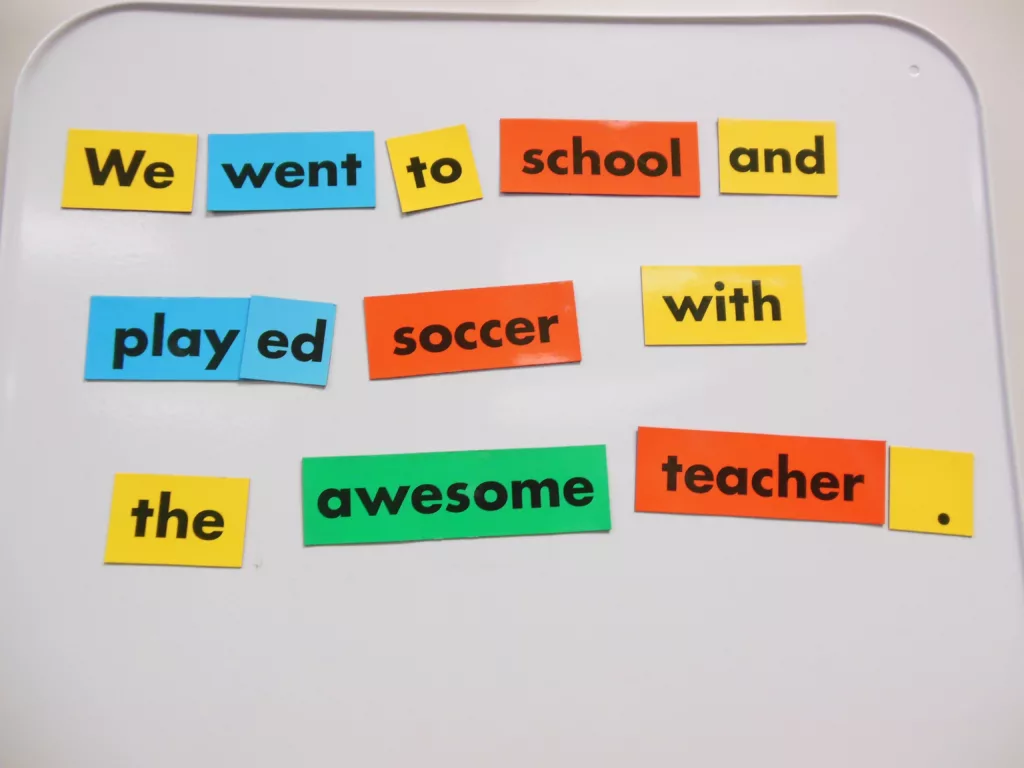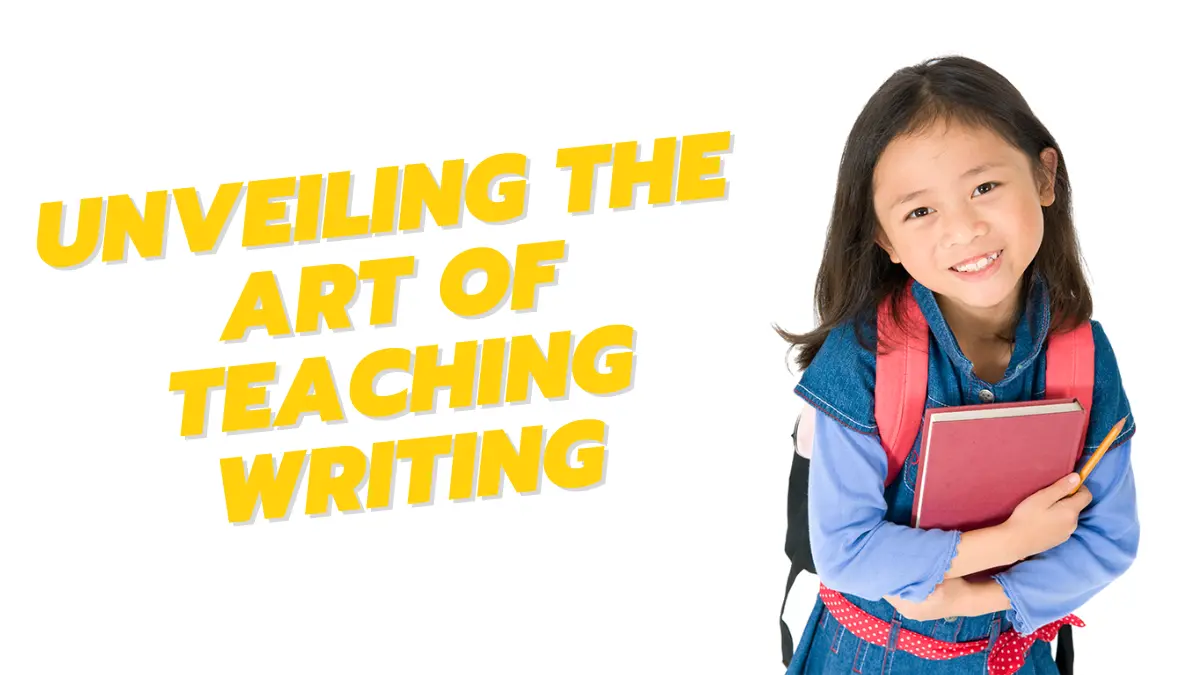Unveiling the Art of Teaching Writing: A Review of ‘How to Teach Writing’
In the ever-evolving landscape of education, teaching writing is both an art and a science, requiring skill, creativity, and a deep understanding of the intricacies of language. Jeremy Harmer’s seminal work, “How to Teach Writing,” published in April 2004, emerges as a guiding light for educators seeking to unravel the complexities of nurturing young writers. In this review, we embark on a journey through the pages of Harmer’s insightful book, exploring the methods, techniques, and wisdom he imparts to his readers. As we delve into the nuances of his approach, we will uncover the secrets behind effective writing instruction, examining how Harmer’s expertise transforms the classroom into a vibrant crucible of literary creativity. Join us as we unveil the art of teaching writing, exploring the invaluable lessons encapsulated within the pages of this indispensable guide.
Introduction to the Book

In the modern educational context, teaching writing skills holds unparalleled significance as it equips students with the tools they need to thrive in a rapidly evolving global landscape. Effective writing skills are the cornerstone of clear communication, enabling students to express their thoughts, ideas, and opinions articulately and persuasively. In an era dominated by digital communication platforms, the ability to convey complex information succinctly and coherently through writing is essential. Whether crafting professional emails, composing research papers, or contributing to online discussions, students with strong writing skills can navigate various academic and professional scenarios with confidence. Moreover, these skills empower individuals to engage in critical thinking, honing their capacity to analyze information, synthesize ideas, and present well-reasoned arguments. As technology continues to reshape communication channels, the ability to write effectively remains a fundamental skill that fosters academic achievement, professional success, and meaningful participation in the global discourse.
Beyond practical applications, teaching writing skills nurtures creativity and empathy, encouraging students to explore diverse perspectives and express their unique voices. Through creative writing, students can unleash their imagination, fostering innovative thinking that is vital for problem-solving and adaptability in an ever-changing world. Additionally, writing provides a platform for social advocacy, enabling students to address pressing issues and contribute meaningfully to societal conversations. By instilling strong writing abilities, educators empower students to become informed, empathetic global citizens who can navigate complexity, engage critically with information, and contribute positively to their communities and the wider world. In essence, teaching writing skills is not just about enhancing literacy; it is about empowering the next generation to communicate effectively, think critically, and shape a better future for themselves and society as a whole.
Overview of Writing Process

The writing process is a complex and iterative journey that involves several interconnected stages, each crucial to producing clear, coherent, and impactful written work. At its core, the process begins with pre-writing, where writers brainstorm ideas, conduct research, and outline their thoughts. During this phase, writers define their purpose, audience, and goals, laying the foundation for their piece. Whether it’s an academic essay, a creative story, or a professional report, a well-structured pre-writing phase ensures that the subsequent writing is focused and purposeful.
Following pre-writing, the next stage is drafting, where writers transform their ideas and outlines into a rough, initial version of their work. Drafting allows for free expression without the constraints of perfection, encouraging writers to get their thoughts down on paper. Once the draft is complete, the process moves into revision, a critical phase where writers review and refine their work. This involves evaluating the overall structure, coherence of ideas, clarity of expression, and logical flow. Writers may rearrange paragraphs, rephrase sentences, or add/delete content to strengthen their message. Revision is an ongoing process, often requiring multiple iterations to polish the piece to its fullest potential.
After revision comes editing, a meticulous stage where writers focus on grammar, punctuation, spelling, and style. Attention to detail is paramount here, as even minor errors can detract from the credibility of the writing. Writers carefully proofread their work, ensuring that language is precise and effective. The final stage, publishing, involves preparing the written piece for its intended audience. Whether it’s submitting an essay for evaluation, sharing a blog post online, or printing a professional report, the publishing phase ensures that the work reaches its readership in the best possible form. Embracing the writing process in its entirety, from pre-writing to publishing, enables writers to produce high-quality content that engages, informs, and resonates with its audience.
Teaching Different Writing Forms

Teaching different writing forms is a multifaceted endeavor that enriches students’ creative expression and equips them with versatile communication skills. One of the key challenges for educators lies in guiding students through the intricacies of diverse writing styles, including essays, short stories, poetry, and technical writing. Each form demands a unique set of techniques and structures, tailored to convey specific messages and emotions effectively. Essays, for instance, require analytical thinking and coherent argumentation, fostering critical reasoning skills essential for academic pursuits. Teaching students how to craft compelling narratives in short stories nurtures their creativity, encouraging imaginative thinking and character development. Poetry, with its focus on imagery and emotion, provides an avenue for students to explore the beauty of language and self-expression. Additionally, technical writing hones clarity and precision, preparing students for real-world scenarios where concise, accurate communication is vital.
To effectively teach these varied writing forms, educators employ diverse pedagogical approaches. Interactive workshops and writing exercises provide students with hands-on experience, allowing them to experiment with different styles and genres. Analyzing exemplary works from renowned authors helps students grasp the nuances of each form, enabling them to understand the mechanics and artistry behind compelling writing. Furthermore, encouraging peer reviews and constructive feedback within the classroom fosters a collaborative learning environment where students can refine their writing skills through dialogue and critique. By embracing these diverse writing forms, educators not only cultivate students’ literary abilities but also empower them to communicate persuasively, creatively, and professionally in a range of contexts, preparing them for the multifaceted demands of the modern world.
Creativity and Writing

Creativity and writing share a symbiotic relationship, where one fuels and enriches the other, leading to the creation of imaginative, thought-provoking, and impactful pieces of literature. Writing serves as a medium through which creativity finds expression, allowing individuals to explore the depths of their imagination and bring their unique ideas, stories, and perspectives to life. Through creative writing, students are encouraged to think outside the conventional boundaries, to envision worlds, characters, and scenarios that challenge the norm. Writing not only allows students to convey their creativity but also nurtures it, acting as a catalyst for innovative thinking and problem-solving. When given the freedom to experiment with words, students learn to play with language, experimenting with various styles, tones, and literary devices. This freedom fosters a sense of ownership over their work, inspiring them to dig deeper into their creative reservoirs to craft narratives that are both compelling and original.
Furthermore, writing serves as a powerful tool for self-discovery and personal expression. Creative writing offers a safe space for students to explore their emotions, fears, dreams, and aspirations, enabling them to make sense of the world around them. By delving into their innermost thoughts and channeling their experiences onto the page, students not only gain a better understanding of themselves but also develop empathy and a deeper understanding of the human condition. Writing creatively allows them to empathize with diverse characters, cultures, and perspectives, broadening their worldview and enhancing their ability to connect with others on a profound level. Ultimately, the marriage of creativity and writing empowers students to embrace their individuality, fostering a lifelong appreciation for the arts while honing their ability to express themselves authentically and meaningfully.
Addressing Common Challenges

Addressing common challenges in teaching writing is an essential aspect of effective pedagogy, enabling educators to support their students in overcoming hurdles and reaching their full potential as writers. One of the prevalent challenges faced by students is writer’s block, a mental barrier that inhibits the flow of ideas. Educators can address this issue by introducing brainstorming techniques, prompts, and creative exercises that stimulate students’ imaginations and encourage them to explore different angles of a topic. Additionally, creating a supportive and non-judgmental classroom environment where students feel comfortable sharing their thoughts and unfinished work can alleviate the pressure, fostering a sense of creative freedom. Moreover, guiding students in setting realistic goals and breaking down the writing process into manageable steps can help them navigate complex assignments, reducing anxiety and boosting their confidence in their writing abilities.
Another common challenge in teaching writing is grammar and syntax errors, which can hinder the clarity and coherence of students’ work. Educators can tackle this issue by incorporating grammar lessons and interactive activities into their teaching plans, emphasizing common pitfalls and rules. Providing targeted feedback on students’ written assignments, focusing on specific grammar issues, helps them understand their mistakes and learn from them. Peer-review sessions, where students evaluate each other’s work under the guidance of the teacher, not only enhance their writing skills but also promote collaborative learning. Additionally, integrating technology, such as grammar-checking software and online writing resources, empowers students to identify and rectify errors independently, promoting self-reliance and a deeper understanding of language mechanics. By proactively addressing these challenges, educators foster a supportive learning environment where students can develop essential writing skills while gaining confidence in their abilities.
Language Development and Writing

Language development and writing are intricately connected, forming a symbiotic relationship that enhances students’ communication skills and intellectual abilities. As students engage in the writing process, they are not merely putting words on paper; they are actively constructing sentences, organizing ideas, and employing vocabulary and grammar rules. Through this iterative process, students refine their understanding of language structure and syntax, deepening their grasp of linguistics. Writing serves as a practical application of language skills, allowing students to experiment with vocabulary, sentence structure, and tone. As they express their thoughts and ideas in writing, they internalize language patterns, expanding their linguistic repertoire and honing their ability to convey complex concepts effectively. Furthermore, writing provides a platform for students to explore different writing styles, registers, and genres, enabling them to adapt their language use to various contexts. By integrating language development with writing instruction, educators not only nurture students’ proficiency in written expression but also foster their overall language competence, empowering them to communicate articulately and persuasively in both written and oral forms.
Assessing and Providing Feedback

Assessing and providing feedback on students’ writing is a fundamental aspect of effective teaching, shaping their growth as writers and communicators. When evaluating written work, educators focus on multiple facets, including content, organization, clarity, and adherence to grammar and style conventions. Constructive feedback is essential, offering specific comments that highlight strengths and areas for improvement. It serves as a guiding light, directing students toward refining their ideas and enhancing their writing skills. Personalized feedback not only reinforces what students have done well but also pinpoints areas where they can develop further, encouraging a continuous learning process. Additionally, feedback should be timely, allowing students to reflect on their mistakes and apply corrections promptly. Moreover, fostering a collaborative feedback culture within the classroom, where peer reviews and group discussions are encouraged, enables students to benefit from diverse perspectives, enhancing their critical thinking and analytical skills. By offering thoughtful assessment and feedback, educators not only help students elevate the quality of their writing but also instill in them the resilience to learn from their mistakes, ultimately nurturing confident, skilled writers.

